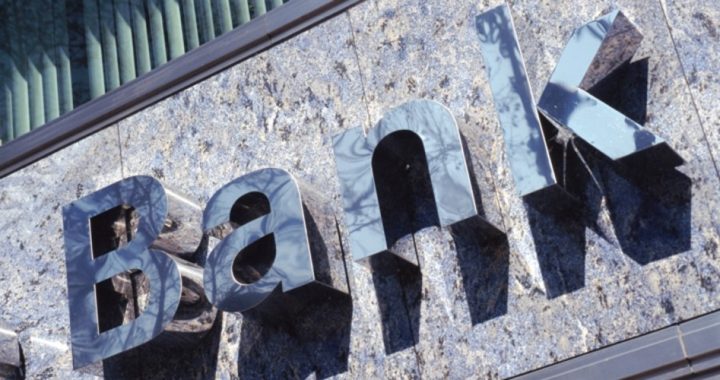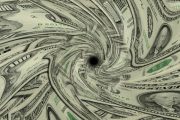
The concept of negative interest rates — in which lenders have to pay to lend money or to invest — has gotten a big boost from the International Monetary Fund. The IMF stated this week that world central banks should move to negative interest rates because the extra monetary stimulus would ease lending conditions. Or so they claim.
José Viñals, the chief financial counselor and director of monetary and capital markets for the IMF, argued for negative interest rates in a research paper, stating, “Although the experience with negative interest rates is limited, we tentatively conclude that overall, they help deliver additional monetary stimulus and easier financial conditions, which support demand and price stability.” Stripped from its statist jargon, what Viñals is saying is that world financial elites want to inflate currencies to cause even more borrowing and lending, partly to keep prices from falling.
During the Great Depression, both Presidents Herbert Hoover and Franklin Roosevelt bought into the thesis that high prices and high wages lead to prosperity. Both championed fiscal and monetary policies that led to a deepening and a prolonging of the Great Depression.
Keeping interest rates artificially low is one way to generate inflation. Another method is what the U.S. Federal Reserve and the Bank of England have adopted since the 2007-09 global financial crisis: so-called quantitative easing — i.e., buying assets to boost the supply of money as an economic stimulus. Since quantitative easing has clearly not worked, and the economy remains stagnant, some supposed experts have now begun to champion the radical proposal of negative interest rates.
Last June, the European Central Bank adopted negative interest rates for the purpose of preventing banks from depositing money with it and instead having them lend to eurozone businesses.
About one-fourth of the world economy by output is presently experiencing official rates that are less than zero.
Some critics of negative interest rates have offered the Keynesian model — increased government spending — as an alternative solution to anemic world economic activity.
The reality is that the American economy has experienced negative real interest rates now for about five years. Real interest rates are interest rates minus the “inflation” rate (here defined not as the increase in the supply of money and credit, but rather by its effect of higher prices). In other words, those putting money into interest-bearing savings accounts — such as CDs, money market accounts, and checking accounts — are experiencing a decline in what their savings will actually buy.
Now, as a way to deal with continued economic stagnation, some financial elites such as those who run the world’s central banks and the IMF are even desirous of seeing negative nominal rates, in which a person would actually have to pay the financial institution to put money into the bank!
It is remarkable that any educated person could make such proposals in a serious manner. Not only will such policies fail to stimulate the economy, but negative interest rates are just a method of income redistribution from savers to borrowers. These policies are particularly brutal to retired persons, who are already receiving such low interest rates that, in real terms, they are actually losing money by putting it into the bank. But such manipulation of the interest rates by the U.S. Federal Reserve System and other leading central banks of the world, keeping interest rates artificially low, is popular with those who borrow money, such as home buyers.
It is basically a government policy to punish savers, and negative nominal interest rates would only exacerbate this punishment.
And these policies will not stimulate economic activity, at least not over the long run. These artificially low rates may very well encourage borrowing by businesses and consumers, but these same people will be less likely to save money. If money is not saved, there is less of it available to be borrowed. Higher interest rates — at the market level — would encourage not only domestic saving, but investment in American financial institutions by foreigners, as well.
An interest rate is simply a price, like any other price. Left to reach their own market level, prices, whether for goods or services, wages for workers, or interest rates (the price for borrowing money), are a signal; in the case of interest rates, to lenders and borrowers. If interest rates are low, this is a signal that people are ready to lend. This is a result of all the individuals who have opted to save for a future purchase, for retirement, or just for a “rainy day.” This money now becomes available for loans to businesses wishing to expand.
But if interest rates are high, money is in short supply. These higher rates tend to discourage borrowing, but they certainly encourage saving. As more people put their money into savings to obtain those higher interest rates, more money will eventually become available for lending. In short, the law of supply and demand self-corrects. No government meddling is needed.
This is the free market’s “invisible hand” at work. But, for political reasons, governments are prone to use their central banking systems to adopt “low interest rate” policies. This creates a false signal, in some cases leading to a “boom.” This boom, however, cannot be sustained, as it has been generated by only a mirage of demand. The boom can continue, but only with fresh infusions of money, or in this case, continued low interest rates. Like a drug addict maintaining his high, it takes ever-increasing amounts of the “drug” — which explains the ludicrous and radical proposal of negative interest rates.
Eventually, the boom can lead to rapid increases in prices, which naturally destroys savings accounts. Germany after the WWI is such an example, when the German mark plunged from four marks to the dollar to four billion (and even more) to the dollar by 1923. Usually, the inflationary boom is halted long before it degenerates to that extreme, leading instead to a bust, or an economic depression (or the more politically correct term, recession).
The great economist Ludwig von Mises explained how this works in his monumental treatise on economics, Human Action:
The drop in interest rates falsifies the businessman’s calculation. Although the amount of capital goods available did not increase, the calculation employs figures which would be utilizable only if such an increase had taken place. The result of such calculations is therefore misleading. They make some projects appear profitable and realizable which a correct calculation, based on an interest rate not manipulated by credit expansion, would have shown as unrealizable. Entrepreneurs embark upon the execution of such projects. Business activities are stimulated. A boom begins.
This is followed, we might add, by the inevitable bust, with widespread business and bank failures, and high levels of unemployment. Even the IMF conceded that longer-term, negative nominal interest rates could undermine the viability of life insurers, pensions, and savings.
Instead of negative nominal interest rates, the wiser policy would be for the government to allow interest rates to rise — or fall — to the normal market level. In simple terms, get out of the way.
Steve Byas is a professor of history at Hillsdale Free Will Baptist College (soon to be Randall University) in Moore, Oklahoma. His book History’s Greatest Libels challenges some of history’s greatest lies about such persons as George Washington, Thomas Jefferson, and Christopher Columbus.



